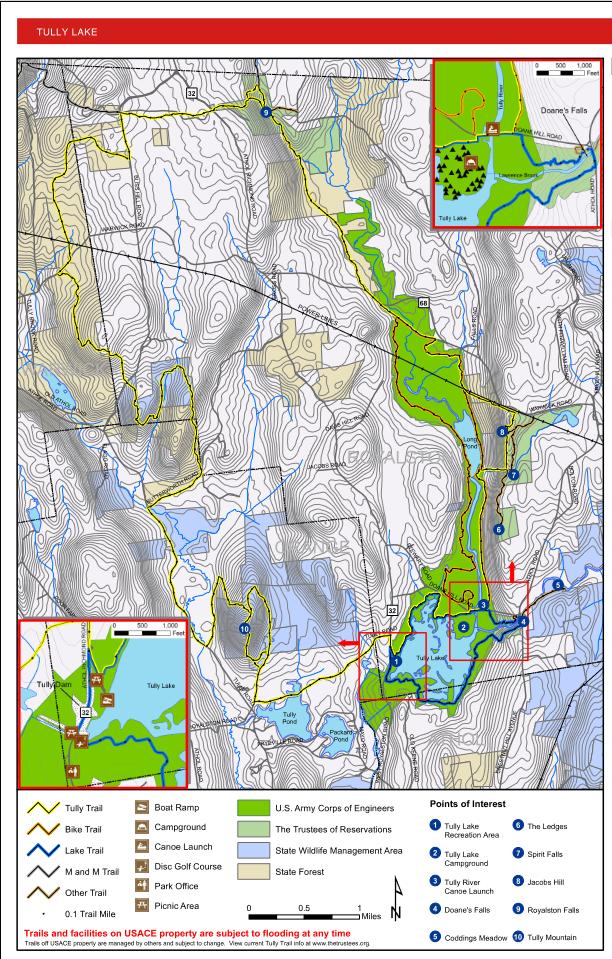Tully Lake, Royalston
About this Location
The 1,262-acre Tully Lake property is managed to sustain a healthy ecosystem for future generations. The thriving biodiversity of the Tully River Valley and the interconnections of our forests, wetlands, waters, and wildlife are valued and managed for the long term.
The Tully River Valley provides vital habitat to a wide variety of wildlife. Although Tully Dam was constructed by 1949, it wasn’t until 1966 that a “summer recreation pool” was created, now known as Tully Lake. Since then, the dam has provided a warm water fishery supporting populations of largemouth bass, chain pickerel, yellow perch, black crappie, hornpout, and bluegills.
Tully Lake is home to a wide variety of wildlife, from tiny insects and songbirds to large mammals such as deer and moose. Although the reservoir can flood 1,140 acres at full capacity, most of the time it simply provides wildlife habitat along with outdoor public recreation.
Fifty-five percent of the reservoir area is wetlands, providing habitat for fish, waterfowl, songbirds, insects, reptiles, amphibians, and mammals such as beaver, mink, and otter. The rest of the property provides habitat for upland species such as deer, coyote, fisher, owl, fox, raccoon, skunk, porcupine, rabbit, and squirrel.
Tully Lake partners with the Massachusetts Division of Fisheries and Wildlife to best manage wildlife habitat from a landscape and ecosystem perspective. Examples of this partnership include logging to create patches of young forest to benefit wildlife that depends on young forests for cover, breeding, nesting, or raising young.
The forest within Tully Dam’s reservoir area is composed primarily of white pine, providing habitat for owls and woodpeckers, red-tailed hawks, and white-tailed deer. The majority of white pines regenerated in abandoned 19th-century fields. Beneath the fields lies a sandy till left by glaciers over 10,000 years ago, which favors the growth of white pine trees. If you are fond of natural history, more can be explored by hiking our interpretive 1-mile “Story Trail” located at the recreation area.
An 11-acre area of old-field white pine forest located south of the lake was harvested to create a locally uncommon and much-needed young forest wildlife habitat.
Over 700 acres of wetlands at Tully Lake serve to purify water, provide wildlife habitat, and slow flooding. Water passing through wetland vegetation is purified of toxins and sediments. The lush vegetation and nutrients in wetlands provide food and cover to a rich diversity of wildlife. Wetlands also absorb and slow water, releasing it gradually and reducing flooding.
A spruce bog, more commonly found in northern New England, lies in an isolated kettle hole formed by melting glacial ice. Sundew and pitcher plants can be found amongst the cranberries in the spillway field.
Features
Restrooms on site
Entrance fee
Roadside viewing
Wheelchair accessible trail
Content from Official Website
Last updated December 19, 2023
